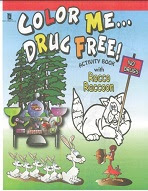This hands-on, inquiry-based program gives you the resources you need to fit science into your day by providing readable standards-based content, powerful integration of reading, vocabulary, and writing, as well as flexible three-step inquiry strategy and materials management solutions.
Solid differentiated instruction to reach every learner and multiple ongoing assessments to prepare students for test success are also included in this science textbook.
CONTENTS
Unit A The Life Processes
Chapter 1: Cells
- Lesson 1: What Are the Parts of a Cell?
- Lesson 2: How Do Single-Celled Organisms Live?
- Lesson 3: How Do the Cells of Organisms Compare?
- Lesson 4: How Are Cells Organized?
Chapter 2: Plant Systems
- Lesson 1: How Do Plants Produce Food?
- Lesson 2: How Do Plants Move Materials?
- Lesson 3: How Do Plants Reproduce?
Chapter 3: Traits of Living Things
- Lesson 1: How Are Traits Inherited?
- Lesson 2 :Why Are Some Traits Very Common?
Unit B Interactions Among Living Things
Chapter 4: Ecosystems, Communities, and Biomes
- Lesson 1: How Do Living Things Form Communities?
- Lesson 2: What Are Biomes?
- Lesson 3: What Is a Food Web?
Chapter 5: Life In Ecosystems
- Lesson 1: What Are Habitats and Niches?
- Lesson 2: What Factors Affect Ecosystems?
- Lesson 3: How Can Humans Change Ecosystems?
Unit C Earth Systems
Chapter 6: Earth’s Changing Surface
- Lesson 1: What Makes Up Earth’s Surface?
- Lesson 2: How Is Earth’s Surface Worn Down?
- Lesson 3: How Is Earth’s Surface Built Up?
Chapter 7: Earth’s Structure
- Lesson 1: What Is Earth’s Structure?
- Lesson 2: What Are Earthquakes and Volcanoes?
- Lesson 3: How Do Mountains Form?
Chapter 8: Using Resources Wisely
- Lesson 1: How Do People Use Resources?
- Lesson 2: How Do People Use Soil?
- Lesson 3: How Can People Use Resources Wisely?
Unit D Atmosphere and Solar System
Chapter 9: Weather and Climate
- Lesson 1: What Factors Affect Climate?
- Lesson 2: How Are Weather Forecasts Made?
Chapter 10: Earth and Its Moon
- Lesson 1: What Causes Earth’s Seasons?
- Lesson 2: Why Does the Moon Have Phases?
Chapter 11: Exploring Space
- Lesson 1: What Orbits the Sun?
- Lesson 2: What Are the Planets Like?
- Lesson 3: What Are Stars Like?
Unit E Kinds of Matter
Chapter 12: Structure of Matter
- Lesson 1: What Are Elements?
- Lesson 2: What Is the Periodic Table?
- Lesson 3: What Are Compounds?
Chapter 13: Characteristics of Matter
- Lesson 1: How Can Materials Be Identified?
- Lesson 2: How Does Matter Change?
- Lesson 3: What Are Solutions and Mixtures?
Chapter 14: Changes of State
- Lesson 1: What Are Three States of Matter?
- Lesson 2: How Does Matter Change State?
Unit F Forms of Energy
Chapter 15: Forces, Motion, and Work
- Lesson 1: What Can Change an Object’s Motion?
- Lesson 2: How Do We Use Simple Machines?
- Lesson 3: What Forces Come from Magnets?
Chapter 16: Energy and Waves
- Lesson 1: What Are Kinetic and Potential Energy?
- Lesson 2: How Are Sounds Made?
- Lesson 3: What Are Some Properties of Light?
Chapter 17: Temperature and Heat
- Lesson 1: What Is Thermal Energy?
- Lesson 2: How Does Thermal Energy Spread?
Chapter 18: Electrical Energy
- Lesson 1: How Is Electricity Produced?
- Lesson 2: What Is An Electric Circuit?
- Lesson 3: How Do People Use Electricity?
























